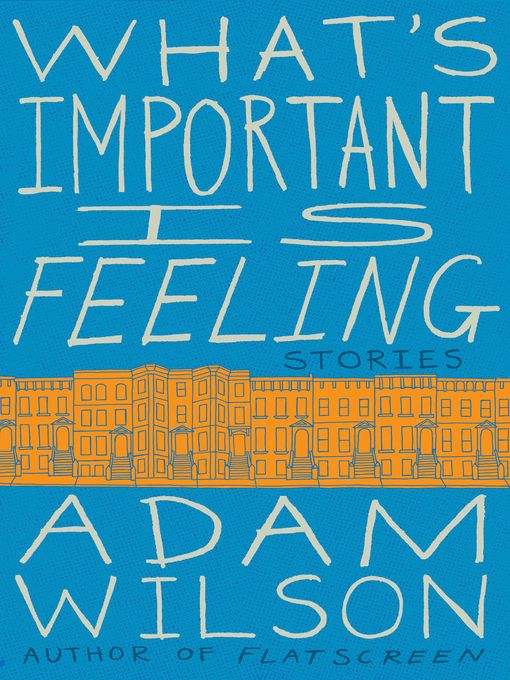
What's Important Is Feeling
Stories
- اطلاعات
- نقد و بررسی
- دیدگاه کاربران
نقد و بررسی

December 9, 2013
Wilson's (Flatscreen) collection presents the listlessness and ennui associated with the postâbaby boomer generation. A twist, though, is that the narrators are Jewish (all but one are male), which puts a particular slant on the slacker attitude. Taken as a whole, the book presents a picture of the coming-of-age angst of this generation, from adolescent lust to the loneliness and failure that waits in the shadow of adulthood. While the best stories resonate, others feel out of reach for readers who can't see themselves on the page. In one of the collection's standouts, "Things I Had," a man recalls, following the breakup of his marriage, growing up Jewish in Miami and attending a Catholic school with his sister as his grandfather faded into senility. At once ironic and wistful, "Some Nights We Tase Each Other" is about four college roommates living in a "classless household" where cocaine and books by Karl Marx also make appearances. And "We Close Our Eyes" details, from the viewpoint of a teenage boy, the state of a family as the mother's cancer returns.

February 1, 2014
Wilson (Flatscreen, 2012) delivers a 12-story collection detailing the existential struggles of modern youth. The millennial generation populates nearly every story, beginning with "Soft Thunder" and "The Long In-Between." Disaffected protagonists appear in the first--semislackers in a garage band share the same damaged girl--and in the second, where a young woman follows her female professor to New York City. (This second tale is the only one told from a female perspective, but it's a distinction difficult to discern; male or female, the collection's young protagonists always seem mired in an existential swamp.) Nevertheless, Wilson crafts artful literary phrases--"my dreams are on the surface; when I wake I only rise inches" or "music mixing with all the dust and soot in the pipes as it came up through the grates. By the time it reached me, it sounded condensed, congested." The most powerful story is "We Close Our Eyes," narrated by teenage Zach. His mother is dying of cancer; his father seems distant and disinterested; and his younger sister is seduced, then shamed by an illicit sex tape. Around this implosion hovers Father Larry, a priest whose husbandlike attention to Zach's mother befuddles the boy. "Tell Me" finds supercilious college boys conned by an addict. Wilson's stories are city stories, many seemingly set in and around Boston, but the title story takes place at a Texas movie location and is narrated by a young film school graduate. Here again, Wilson does yeoman work with characters, from Monica, a young leading lady already seduced by celebrity's seamier elements, to Felix, hypercrazed writer-producer. The remaining stories--"Sluts at Heart," "America Is Me and Andy," "The Porchies" and "Milligrams"--also speak to millennial agitation at the edge of maturity, where reality is tackled with drugs, alcohol and sardonic contempt. Bleak First-World angst, delivered with style.
COPYRIGHT(2014) Kirkus Reviews, ALL RIGHTS RESERVED.

February 1, 2014
This collection of 12 short stories follows Wilson's critically acclaimed first novel, Flatscreen (2012). First-person narrators tell of ambition, personal failure, and loss. People die, jobs are lost, and dreams dissolve under the grind of daily life. Many of the stories are set in New York City and the Boston area, but one, the hilarious What's Important Is Feeling, comments on the culture clash between L.A. types on a film shoot and the contemptuous Texas oil-field workers who surround them. Wilson's use of language can be ironic and satiric, sometimes sparkling with humor even as it stabs at the peculiarities of American culture (in The Long In-Between, a young woman comes to Manhattan, which she describes as having New York's immutable infrastructure. No matter how high you climbed, there would always be someone above you ). And since Wilson often describes the lives of teens, college students (and dropouts), and new professionals, drugs, sex, and profane language lend verisimilitude to the narration. Irony and strong writing make this an excellent addition to short story collections.(Reprinted with permission of Booklist, copyright 2014, American Library Association.)




دیدگاه کاربران